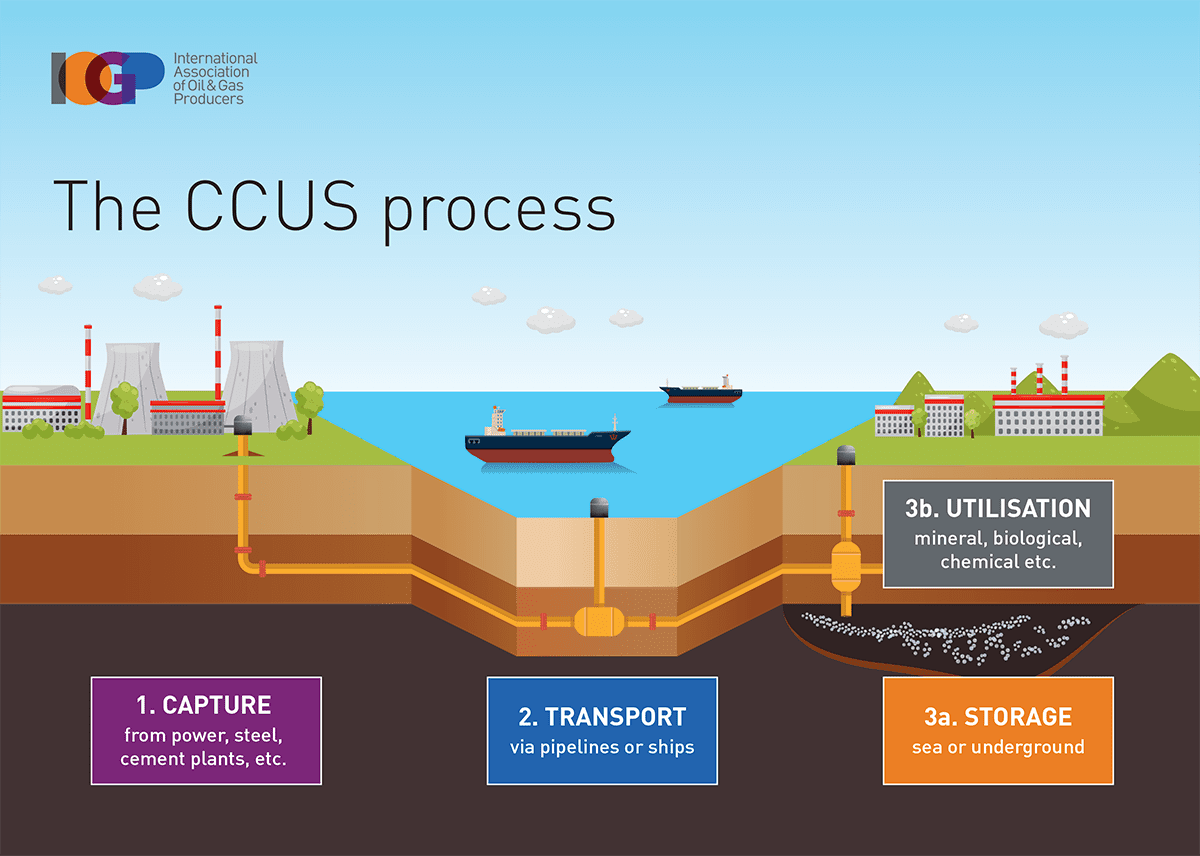
CCUS: A key technology for a lower carbon future
Carbon Capture Utilization and Storage (CCUS) plays a vital role in moving towards a lower carbon emissions future. According to the Sustainable Development Scenario of the IEA’s World Energy Outlook 2019, CCUS could provide 9% of the cumulative emissions reduction between now and 2050. For this reason, there has been a steady increase in the number of CCS and CCUS projects in the last few years. As the Global CCS Institute reports, between 2017 and 2019, there was a 34% growth in total carbon and storage capacity for large scale facilities (Global CCS Institute, 2019, The 2019 Global Status of CCS).
As we can see in the IOGP Global CCS/CCUS Project map above (see also IOGP Factsheet Map of Global CCS Project for more details), there are currently 20 large-scale CCS projects in operation in the world for a total capacity of around 34 Mtpa (million tonnes per annum), with the highest concentration in North America. In addition, there are 42 projects either under development (four under construction, eight in advanced development, nine in early development, and one commissioned) or under different stages of evaluation (20) that might come onstream in the next decade, with the potential to provide roughly 75 Mtpa of new capacity. North America and Asia Pacific lead the way in terms of future projects, while Europe – with the highest number of feasibility studies underway – follows.
CCUS reduces emissions from industrial processes which are vital to the global economy, like steel, cement, and chemicals production. Paired with bioenergy used for power generation or biofuel production, it is one of the few technologies that can deliver negative emissions crucial to achieving the Paris Agreement targets. Moreover, the versatility of CCUS and its ability to reduce both the flow and stock of CO2 makes it a strategic risk management tool for climate mitigation (Global CCS Institute, The value of carbon capture and storage, 2020).
CCUS is an emission reduction process developed to prevent large amounts of CO2 from being released into the atmosphere. As shown in the graphic below, the process of CCS consists of capturing CO2 produced by large industrial plants (such as power plants, refineries, steel mills, still and cement plants, and hydrogen production plants), compressing it for transportation via pipeline or ship, and then injecting it into underground rock formations at carefully selected sites. The CO2 can be stored in dedicated storage sites such as depleted oil and gas reservoirs or deep saline formations, or it it can be injected underground for Enhanced Oil Recovery (EOR) purposes.

Captured CO2 can be used for industrial purposes, in practices known as Carbon Capture Utilization CCU. The process of CCU contributes to a lower carbon emissions future by recycling CO2. By using captured CO2 in areas such as mineralization, biological, chemical, as well as food processing and packaging, CCUcontributes to circular economy.
CCUS is not a new technology: the capture process has been around since the 1930s and has been used to purify natural gas, hydrogen, and other gas streams in industrial settings. Commercial scale underground injections of CO2 have been used in the oil and gas industry since the 1970s. The oil and gas industry is the main player in this industry. Of the 35 Mt CO2 captured in 2019 today from industrial activities in large-scale CCUS facilities, nearly 80% is captured from oil and gas operations (IEA, The Oil and Gas Industry in Energy Transitions, 2020).
Governments also have a pivotal role to play in facilitating the growth of CCUS by providing a clear, stable, and favorable policy framework for CCS. This can be achieved with regulatory levers, market-based frameworks, public procurement, low-carbon product incentives, tax credits, or grant funding. Governments can also play a role in facilitating the growth of multi-user transport and storage networks that industrial facilities can access (IEA, The Oil and Gas Industry in Energy Transitions, 2020).